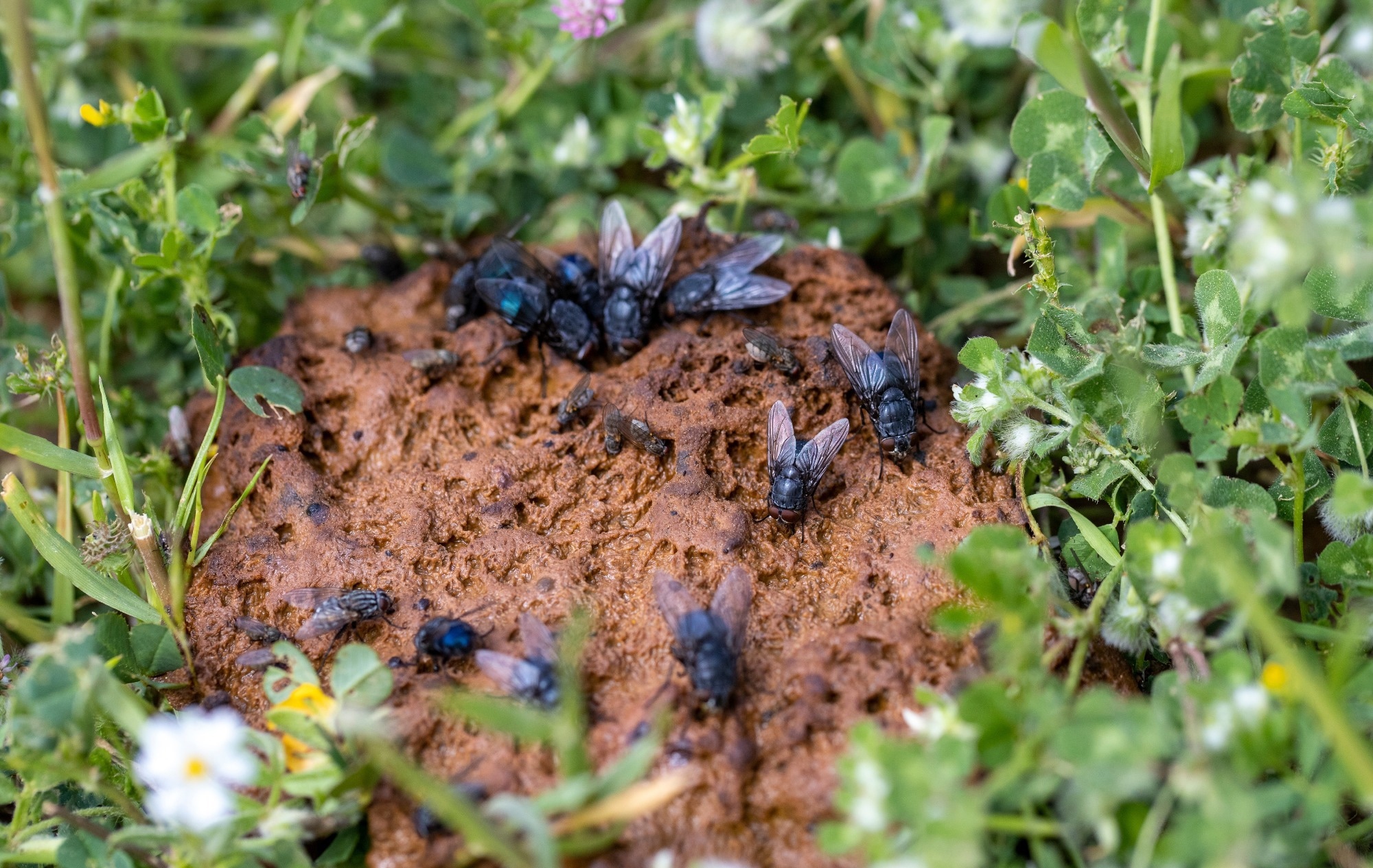A genomic deep dive shows that manure-feeding flies may be silent super-spreaders, transferring and amplifying resistant pathogens from livestock waste into the farm environment.
 Study: Genomic evidence for flies as carriers of zoonotic pathogens on dairy farms. Image Credit: ibrahim kavus / Shutterstock
Study: Genomic evidence for flies as carriers of zoonotic pathogens on dairy farms. Image Credit: ibrahim kavus / Shutterstock
In a recent study published in the journal npj Biofilms and Microbiomes, researchers investigated whether coprophagous muscid flies (specifically Neomyia cornicina) acquire and spread zoonotic pathogens and antimicrobial resistance genes (ARGs) from cow manure on dairy farms.
Background
Over 60% of emerging infectious diseases (EID) originate from animals, and similarly, dairy farms can serve as breeding grounds for zoonotic bacteria, such as Escherichia coli (E. coli), Salmonella enterica, and Coxiella burnetii, which often carry antibiotic resistance genes (ARGs) that increase health risks. These flies feed and breed in cow manure, potentially ingesting and spreading these pathogens.
While culture-based studies have shown the presence of pathogens in flies, they have been unable to trace genomic similarities across different environments. Shotgun metagenomic sequencing allows researchers to analyze shared genes between flies and manure directly. Further research is needed to confirm these transmission pathways across farm settings.
About the Study
Researchers collected 29 adult muscid flies (molecularly identified as predominantly Neomyia cornicina) from a dairy farm in Saint-Genès-Champanelle, France. The flies were captured while feeding on or hovering above freshly deposited manure. Dissected gastrointestinal tracts (GITs) from each fly underwent Deoxyribonucleic Acid (DNA) extraction and sequencing.
Parallel data were obtained from 48 previously collected samples of cow manure. Metagenomic reads were processed, filtered, and assembled into contigs using Autometa, with completeness and contamination assessed using CheckM. High-quality metagenome-assembled genomes (MAGs) were created and taxonomically classified.
To determine fly species, mitochondrial cytochrome oxidase subunit I (COI) gene sequences were analyzed, confirming Neomyia cornicina as the primary species. Researchers compared MAGs from fly and manure samples using a centered log-ratio transformation to identify abundance and overlap. Functional genomic features, including ARGs and virulence factors (VFs), were mapped using the ResFinder and VFdb databases, respectively.
Only features present in ≥50% of samples with reads covering ≥90% of gene length were retained. The presence of bovine mitochondrial COI genes in fly GITs was also used to trace feeding to specific manure pools (revealing three distinct genetic clusters). Antimicrobial usage records from the farm revealed no statistical correlation with observed ARG patterns (coinertia analysis, p > 0.05). All sequencing data were analyzed using R and Python-based pipelines.
Study Results
Metagenomic sequencing of the 29 fly GITs generated over 3.5 billion reads. From these, 506 MAGs were assembled, of which 42 met high-quality standards and spanned 15 bacterial genera, including Frischella (which encoded vitamin B6/lipoic acid biosynthesis pathways, suggesting potential mutualism), Fibrobacter, and Prevotella.
Comparative phylogenetic analysis revealed close genetic relationships between MAGs from flies and cow manure, especially for Fibrobacter and other gut-associated bacteria.
Taxonomic and functional profiles showed significant overlap between flies and manure. Of the 50 most abundant MAGs, 34 were found in both flies and manure, suggesting a shared microbial flow. However, distinct differences also emerged: fly GITs showed a higher enrichment of insect-associated taxa, such as Frischella and Entomomonas, while manure samples had a higher proportion of obligate anaerobes, including Bifidobacterium. Flies appeared to selectively retain microbes capable of surviving oxygen-rich, mobile environments.
Functional annotation identified unique pathways in fly-enriched bacteria, especially in vitamin B6 (pyridoxal phosphate) and lipoic acid biosynthesis, indicating potential mutualistic benefits for the host. Importantly, many shared MAGs between flies and manure encoded complete pathways for amino acid and carbohydrate metabolism, suggesting ecological adaptability.
Analysis of VFs revealed 1,934 genes shared across fly and manure microbiomes. After filtering, 43 were present in at least half of both groups, including key adhesion and secretion genes. E. coli secretion-related VFs (espL4, espX5) and Coxiella burnetii genes (coxFIC1) were significantly more abundant in fly samples. Shiga toxin genes, known for causing severe human illness, were also detected.
ARG analysis showed 86 ARGs across all samples, with 18 present in both flies and manure after filtering. Notably, flies carried higher levels of beta-lactam resistance genes like blaOXA, as well as aminoglycoside and tetracycline resistance genes. Farm antibiotic records confirmed the use of these drugs, though no statistical correlation existed between usage patterns and ARG prevalence.
Bovine COI gene sequences were found in 23 fly GITs, grouped into three distinct clusters linked to specific manure sources. Matching these sequences with manure samples allowed researchers to trace pathogen overlap. Eight pathogen genomes, including those of E. coli O111 and O157, Shigella, and C. burnetii, were identified in both fly and manure samples.
In several cases, pathogen abundance was higher in the fly's GIT, suggesting bacterial proliferation post-ingestion. The presence of these pathogens in flies poses a significant risk for disease transmission to humans, especially farm workers.
Conclusions
To summarize, this study provides genomic evidence that Neomyia flies act as vectors for zoonotic pathogens and ARGs on dairy farms. Through metagenomic sequencing, researchers traced microbial flow from cow manure to the fly GIT, identifying shared VFs, ARGs, and complete pathogen genomes. Findings suggest that flies may not only transport pathogens but also facilitate their proliferation.
These results underscore the need for integrated pest and hygiene management in agricultural settings to minimize public health risks, though multi-farm and longitudinal studies are needed for validation.